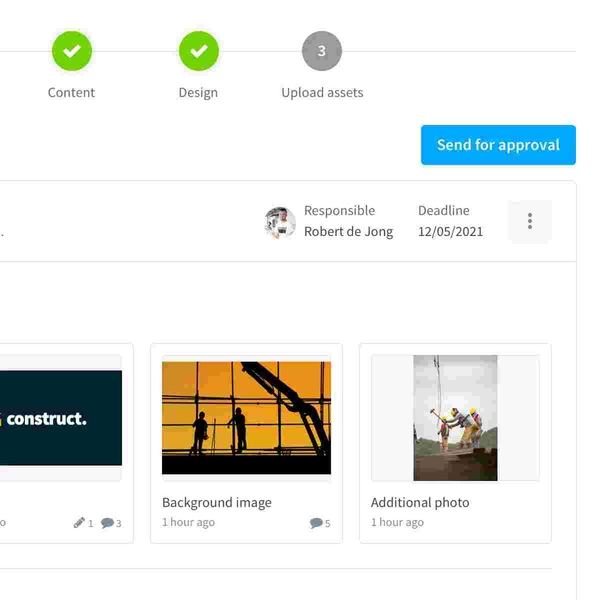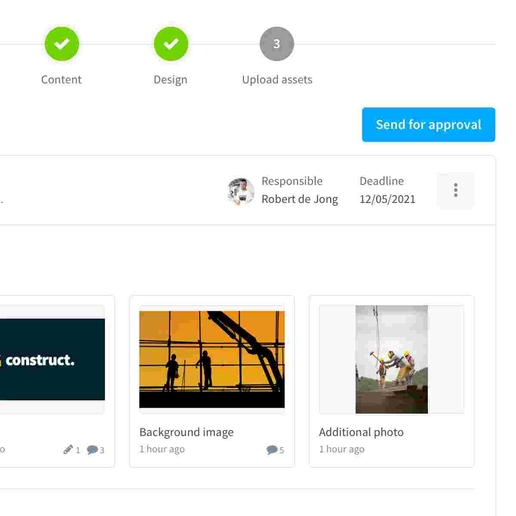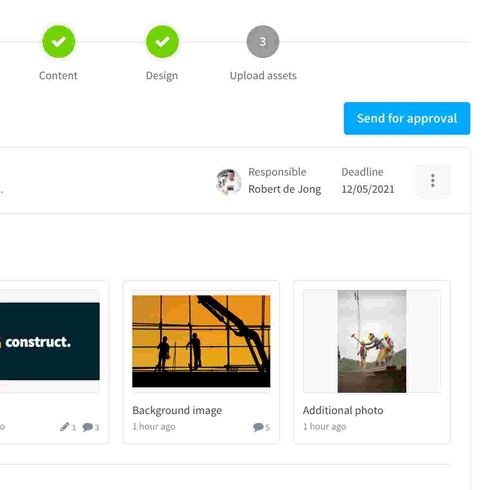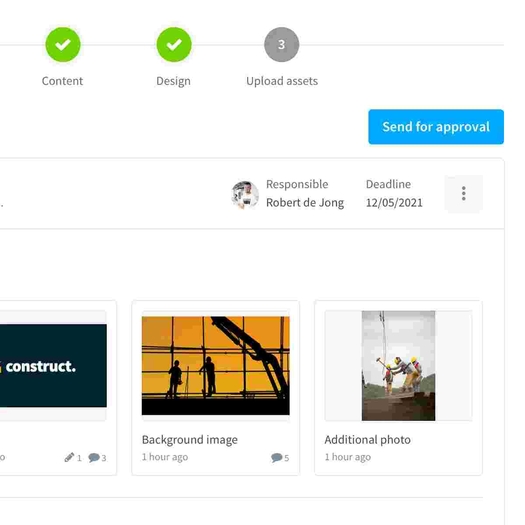How Bynder helps chemical, energy and construction brands
Centralize and organize
- Use shortcuts on your brand portal homepage to useful collections like on-site and off-site location photography
- Control asset usage by setting license dates upon upload and specifying usage restrictions
- Use your company-specific terminology to tag and organize your digital content
- Get automatically notified when new asset versions are updated




The challenge
More on Asset Workflow
Collaboration isn't as easy as it should be.
Our solutionAutomate processes & self-serve
- Easily distribute event and campaign materials to PR partners and subsidiaries with content collections
- Use Asset Workflow to centralize feedback and ensure approvals for content and messaging




The challenge
More on Studio
Brand reputation is at risk.
Our solutionMake it simple to safeguard your brand
- Increase re-use of approved content by centralizing it in your brand portal
- Automatically enforce branding guidelines with our on-brand asset creation tools
- Localize and publish content and guidelines for global brand consistency
- Use always-available, online Brand Guidelines as instructions for how to portray your brand and utilize marketing content




The challenge
More on Integrations
Distribution across channels needs to be seamless so you can focus on growth.
Our solutionAutomatic distribution to the right channels
- Create on-brand digital, print and video content in the right channel formats and languages
- Power your content distribution with Bynder’s API and integrations with CMS, PIM and more




Suggested resources for chemical, energy and construction brands

Curious how Bynder can help your brand?
Our in-house experts can walk you through everything you need to know.
Book a demo DAM Feature Overview
























